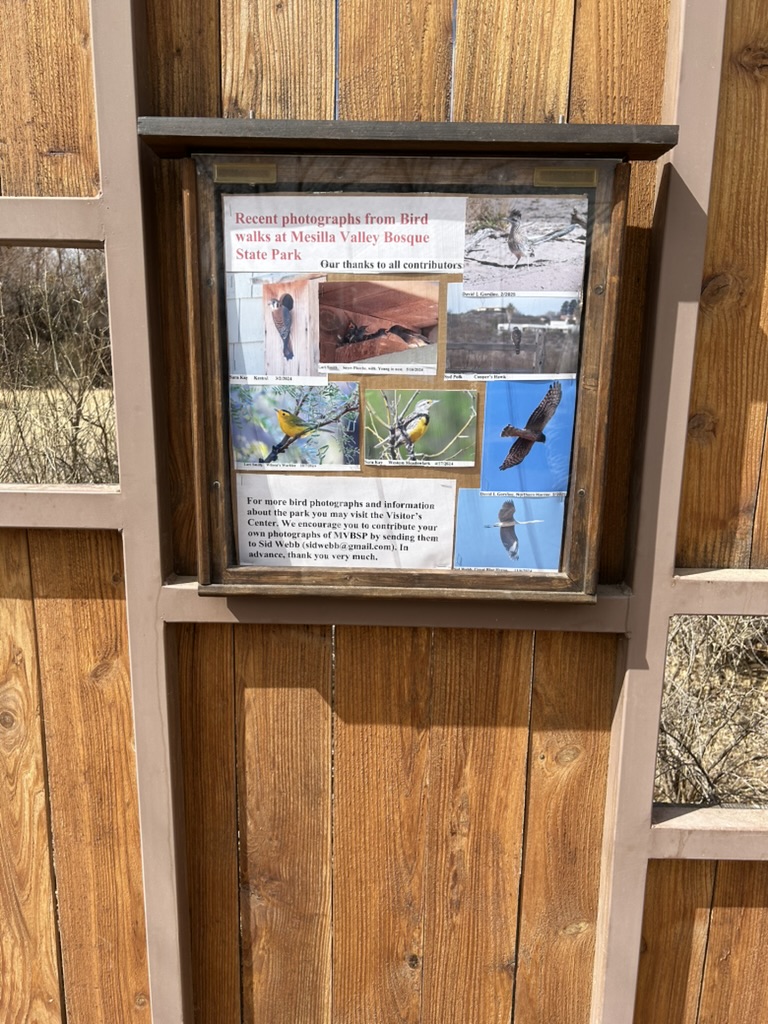(You may have gathered that these trip reports are not in chronological order.)
The NPS’s driving directions to Chaco Culture National Historical Park read, in part, “13 miles (21 km) of rough dirt road (CR 7950). The 4.5 miles (7 km) before entering the park are very rough.” (Empasis added) “Very rough” means almost constant washboard conditions, 1 to 2 on my 5-point impassibility scale, mercifully little in the way of ruts, rocks, or potholes. This is not a place to drop in for a casual visit.
 But O, it’s worth the drive. As the gravel road gives way to pavement within the park boundary, you’re confronted with Fajada Butte.
But O, it’s worth the drive. As the gravel road gives way to pavement within the park boundary, you’re confronted with Fajada Butte.
The centerpiece of the park is the (reconstructed) remains of Pueblo Bonito, a ginormous complex of what once comprised 600 rooms and 40 kivas, according to the NPS brochure. It’s so vast that trying to capture it in a photo or two seemed futile. So I snapped a Rock Wren (Salpinctes obsoletus) instead.
 Hungo Pavi is of a much smaller scale. I was taken by the rhythm of small windows and openings for the roof supports.
Hungo Pavi is of a much smaller scale. I was taken by the rhythm of small windows and openings for the roof supports.
 Casa Rinconada is a large kiva, roofless but otherwise restored to grandeur.
Casa Rinconada is a large kiva, roofless but otherwise restored to grandeur.
Turning Maria back to base, I abruptly stopped for a small herd of Wapiti (Cervus canadensis).
The next day, I visited another unit that is managed with CHCU. Aztec Ruins National Monument is much more accessible by vehicle, and more interactive, if you will. A walking path takes you through the fully rebuilt Great Kiva, as well as a series of rooms—it’s not a walk for the claustrophobic.
On the grounds just outside the monument, Gunnison’s Prairie Dogs (Cynomys gunnisoni) were keeping an eye on things.
And then on to Navajo Dam State Park, for a stop that wasn’t too fruitful, before moving on to Santa Fe. But I did find a second species of ground squirrel, Rock Squirrel (Otospermophilus variegatus) and a life bird, Woodhouse’s Scrub Jay (Aphelocoma woodhouseii).

 Details from the stunning Abstract Futures, by Hilma’s Ghost collective (Sharmistha Ray and Dannielle Tegeder), 3rd Avenue entrance to the 7 train.
Details from the stunning Abstract Futures, by Hilma’s Ghost collective (Sharmistha Ray and Dannielle Tegeder), 3rd Avenue entrance to the 7 train. P???man Building, 350 W. 31st Street. Maybe “Postman,” as it is home to a postal workers’ union and is right across the street from the Farley post office.
P???man Building, 350 W. 31st Street. Maybe “Postman,” as it is home to a postal workers’ union and is right across the street from the Farley post office.
 Looking through Tony Smith’s Throwback at a proffered plaza between 45th and 46th Streets. The marker has a hilariously detailed catalog of what the plaza has to offer:
Looking through Tony Smith’s Throwback at a proffered plaza between 45th and 46th Streets. The marker has a hilariously detailed catalog of what the plaza has to offer: The view from the 16th floor of the Marriott Marquis. At center, the relatively diminutive St. James Theatre on 44th Street, surrounded by rooftop water towers.
The view from the 16th floor of the Marriott Marquis. At center, the relatively diminutive St. James Theatre on 44th Street, surrounded by rooftop water towers.




































